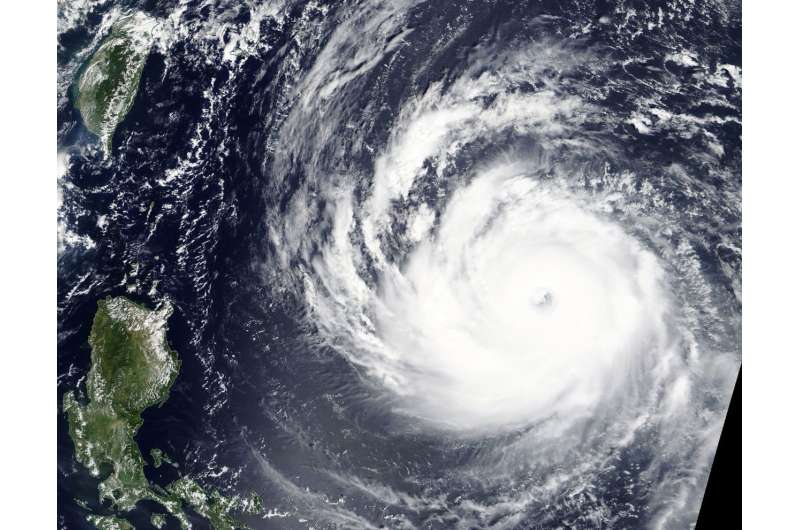NASA's Terra Satellite glares at the 37-mile wide eye of Super Typhoon Trami

NASA's Terra satellite provided a visible image of Super Typhoon Trami as it continued moving in a northwesterly direction in the Northwestern Pacific Ocean. Terra provided an amazing image of the large eye.
At 9:50 a.m. EDT (1350 UTC) on Sept. 24, the Moderate Resolution Imaging Spectroradiometer or MODIS instrument aboard NASA's Terra satellite provided a visible-light image of Super Typhoon Trami in the North Western Pacific Ocean.
The MODIS image showed that Trami has a symmetric eyewall surrounding a 37 nautical-mile round eye.
At 11 a.m. EDT (1500 UTC) on Sept. 24 the center of Super Typhoon Trami was located near latitude 19.4 degrees north and longitude 129.5 degrees east. It is located 445 nautical miles south-southeast of Kadena Air Base, Okinawa Island, Japan.
The Joint Typhoon Warning Center noted that the storm is moving toward the wet-northwest and this general motion is expected to continue. Maximum sustained winds are near 149.6 mph (130 knots/240.8 kph) with higher gusts.
Trami is expected to peak at 167 mph (145 knots/268 kph) in the next day before beginning a weakening trend.
Provided by NASA's Goddard Space Flight Center




















